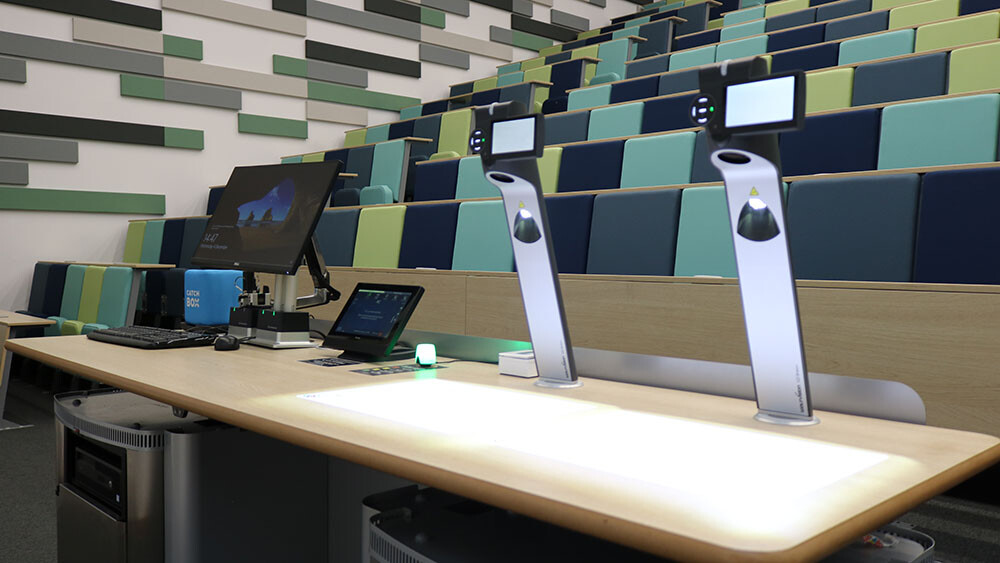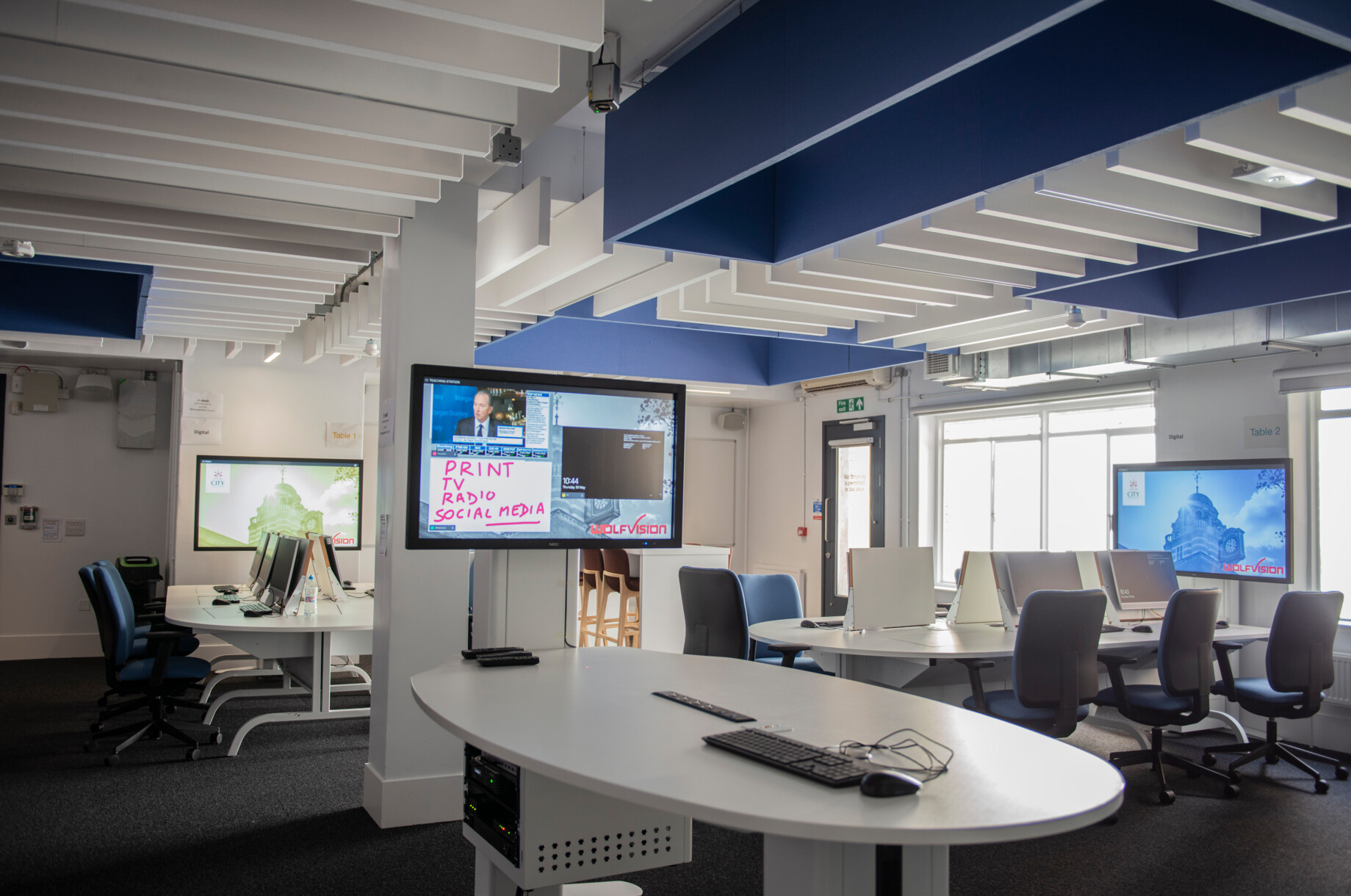Exploring EdTech: The Role of Education Technology in Enhancing Learning Experiences
Introduction
In an era where technology permeates every aspect of our lives, education has not remained untouched. The integration of technology in education, known as Education Technology or EdTech, has transformed traditional classroom settings and methodologies, paving the way for innovative teaching and learning experiences.
This article delves into what EdTech encompasses, its significance in modern education, and how it has revolutionized learning environments. With a particular focus on the contributions of WolfVision, we explore how advanced audiovisual (AV) technologies are enhancing educational outcomes and shaping the future of education.
Key Takeaways
Defining EdTech: Education technology includes a vast range of digital tools and solutions—from e-books and mobile apps to complex learning management systems and AI-driven platforms—that enrich learning by making it more accessible, engaging, and tailored to individual needs.
Importance of EdTech: EdTech addresses crucial challenges in education such as enhancing accessibility, supporting personalized learning, and bridging the gap between remote and in-class learning environments. It democratizes education, allowing students from any background to access quality learning resources.
Transformation Through Technology: Technology has dismantled traditional barriers in education, such as geographic isolation and rigid learning schedules. Collaborative technologies and data analytics now enable real-time, interactive learning experiences and insight-driven educational strategies that adapt to student needs.
Trends and Innovations: Trends in EdTech, where WolfVision plays a significant role, include active learning, hybrid learning, and the integration of streaming and recording technologies. These innovations facilitate flexible, engaging, and effective learning solutions that can be customized to meet diverse educational demands.
WolfVision’s Role: WolfVision's advanced AV solutions exemplify the practical application of EdTech, enhancing the sensory experience of learning and supporting a dynamic educational environment. Their technologies are pivotal in making classrooms more interactive and learning more impactful.
Conclusion: As we continue to navigate the evolving landscape of education, the role of technology becomes increasingly central. WolfVision is at the forefront of this evolution, continually innovating to meet the dynamic needs of modern educators and learners. By embracing these advancements, educational institutions can offer more inclusive and effective learning environments.

What is Educational Technology?
Education technology, often abbreviated as EdTech, represents the integration of digital tools and innovative solutions to support and enhance the educational process. This field includes a wide array of systems and technologies, from basic digital content like e-books to sophisticated learning management systems that organize and deliver entire curricula.
EdTech extends beyond mere digital replacements for traditional learning materials; it incorporates advanced technologies such as virtual reality (VR) for immersive learning experiences, artificial intelligence (AI) to tailor educational paths to individual student needs, and cloud-based platforms that facilitate real-time, collaborative interactions among students and teachers across the globe. These tools are designed not only to digitize the existing educational methodologies but to fundamentally transform how education is conceptualized and delivered.
Moreover, EdTech involves the use of hardware and software solutions that enhance the learning environment. This includes everything from interactive whiteboards and video conferencing systems in classrooms to mobile applications like language learning apps that people use in their daily lives. The underlying principle of EdTech is to optimize and improve the learning experience by making education more accessible, engaging, and efficient.
In the spectrum of EdTech, audiovisual (AV) technology plays a pivotal role by enriching the sensory experience of learning. AV technologies bridge the gap between digital content and the human experience, enabling more effective communication and comprehension through visual and auditory means. This includes the use of high-definition displays, sound systems, and interactive interfaces that make educational content more vivid and engaging. By integrating AV technology, educators can transform traditional lectures into interactive sessions where visual aids and simulations bring abstract concepts to life, thereby enhancing student understanding and retention.
WolfVision’s contributions to this field, with its advanced Visualizers and collaboration systems, exemplify how audiovisual technology can create dynamic and interactive learning environments that enhance both teaching and learning outcomes. Education technology is not about replacing the fundamental elements of education—such as reading, writing, and math—but rather enhancing these cornerstones through digital innovation.
In summary, EdTech is about examining traditional classroom formats and discovering ways to improve or wholly transform them using digital technology, ensuring that learning is not only preserved but also enhanced in the digital age. WolfVision's solutions are particularly impactful in the realm of higher education technology, enhancing lecture delivery and student engagement.

Why is EdTech Important?
Education technology (EdTech) is fundamentally transforming the educational landscape, addressing a myriad of challenges that have traditionally hindered the efficiency and accessibility of learning. At its core, EdTech enhances educational accessibility, ensuring that students from various geographical locations and diverse backgrounds can access high-quality education and resources. This democratization of education is crucial in an increasingly globalized world where education equity has become a central goal.
Moreover, EdTech supports personalized learning—a tailored educational approach that adapts to the individual learning speeds, styles, and needs of each student. This personalization is vital as it accommodates students’ unique learning preferences, enhancing engagement and motivation. By leveraging data analytics and AI, educators can customize content, assessments, and learning paths, thus providing a learning experience that is not only more engaging but also more effective in meeting educational objectives.
Accessibility and personalization are just the beginning. EdTech also plays a crucial role in bridging the gap between remote learners and traditional classroom settings. Technologies such as video conferencing, real-time collaboration tools, and cloud-based learning management systems enable seamless integration of various learning environments. With tools to stream and record lectures, educational institutions can extend learning opportunities beyond the physical confines of classrooms, making learning continuous and flexible.
In addition to facilitating access and personalization, EdTech is instrumental in promoting active engagement, and interactive learning environments created using digital tools can certainly help to encourage a more engaged learning process. Students are not just passive recipients of information but active participants in constructing their knowledge. Tools like simulation software, virtual labs, and gamified learning platforms make learning interactive and enjoyable, which can significantly enhance learning outcomes.
Furthermore, EdTech supports lifelong learning and professional development outside the traditional classroom setting. With the proliferation of mobile technology and e-learning platforms, learners can continue their education at any stage of their life and career, accommodating ongoing educational needs in a rapidly changing world.
In essence, the importance of EdTech stems from its ability to make education more inclusive, adaptive, and engaging, ensuring that all learners, regardless of their circumstances, have the tools they need to succeed. WolfVision's commitment to enhancing these aspects through innovative AV technologies underlines the transformative potential of EdTech in the educational sector.

How has Technology Changed Education?
Technology has revolutionized the educational landscape, dismantling traditional barriers of time and space that once defined the limits of educational reach and efficacy. This transformation is evident in the shift towards online and hybrid learning models that enable students to attend classes and access learning materials from anywhere in the world, at any time. This flexibility is not just a convenience; it’s a fundamental shift that makes education more inclusive and accessible to a broader audience, including those who might have been excluded from the traditional education system because of geographical or economic constraints.
Collaborative technologies have been at the forefront of this change, altering the dynamics within classrooms. Tools such as virtual whiteboards, shared document platforms, and synchronous online classes promote cooperative learning and facilitate real-time collaboration among students, regardless of their physical locations. These technologies help students and teachers to interact as if they were in the same room, thus extending educational opportunities across continents and cultures.
Further enhancing these developments, the integration of data analytics in education has enabled a more empirical approach to teaching and learning. Educators can now use data to monitor student engagement and performance in real-time, allowing for more dynamic and responsive teaching strategies. This data-driven approach aids in customizing learning experiences to better meet individual student needs and improve overall academic outcomes.
The transformation is also reflected in the structure of learning itself. Hybrid and blended learning environments, which combine online digital media with traditional classroom methods, offer a more personalized learning experience. Technology allows students to learn at their own pace, revisit challenging concepts, and engage with interactive content that enhances understanding. This autonomy and personalization help foster a more engaging and effective learning environment.
WolfVision’s advanced streaming and recording solutions exemplify how AV technology can be leveraged to broaden the reach of these educational transformations. By facilitating high-quality video and audio recordings of lectures, these technologies ensure that learning is not only accessible but also adaptable to the needs of a diverse student population. This capability is crucial in maintaining continuity and consistency in education, especially in scenarios where in-person attendance fluctuates.
In conclusion, technology has fundamentally altered the educational paradigm by making learning more accessible, flexible, and interactive. These changes have not only broadened educational opportunities but have also enhanced the quality of education available, paving the way for a more informed, connected, and educated global populace. Among educational technology companies, WolfVision stands out for its innovative solutions that dramatically enhance learning environments.

Trends in EdTech
In recent years, certain trends have emerged in the EdTech space where WolfVision has been particularly active:
1. Active Learning: By incorporating tools that promote participation, such as interactive displays and the Cynap range of Wireless presentation and collaboration solutions, educators can involve students more directly in the learning process, leading to higher engagement and retention rates.
2. Hybrid Learning: Combining online and face-to-face learning creates a flexible education model that accommodates diverse learning preferences and challenges. WolfVision’s technology supports this model with solutions that integrate easily with existing educational infrastructures.
3. Streaming and Recording: As institutions seek to expand their reach and adapt to remote learning demands, streaming and recording lectures have become essential. WolfVision’s solutions provide high-quality audio and video that make virtual classes as engaging and effective as traditional ones.
4. Lecture Capture: This technology is essential for creating a repository of educational resources that students can access anytime. It supports lifelong learning and review, making education more flexible and comprehensive.
Conclusion
As we look to the future, the role of education technology in enhancing learning experiences continues to grow. Exploring the latest trends in education technology reveals how solutions like those from WolfVision are setting new benchmarks in interactive learning. WolfVision is dedicated to advancing technology for education, ensuring that students and educators have access to the best tools for learning and teaching.
WolfVision is committed to leading this change by providing cutting-edge AV solutions that meet the evolving needs of educators and students alike. By embracing EdTech, educational institutions can offer more dynamic, inclusive, and effective learning environments. Understanding why technology is important in education helps stakeholders appreciate the value of solutions offered by companies like WolfVision.
